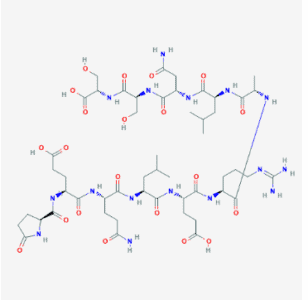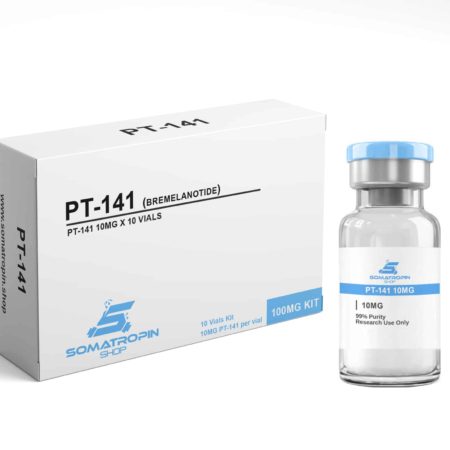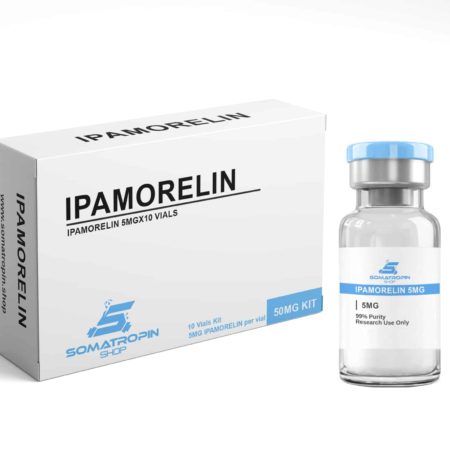What is ARA-290?
ARA-290 is a small peptide derived from the helix beta domain of erythropoietin (EPO). EPO has long been known to exhibit actions beyond the stimulation of red blood cell production in bone marrow. The glycoprotein, which is made in the kidney, has been found to stimulate blood vessel growth, promote cell survival, alter blood pressure, and produce neuroprotective effects in diabetic neuropathy. ARA-290 offers the neuroprotective and pain relieving effects of EPO without stimulating red blood ell production. ARA-290 has completed phase II trials and is in preparation to enter phase III trials for a variety of applications in diabetes and the autoimmune sarcoidosis. Right now, the peptide is of active interest for its ability to control neuropathic pain, but it is also under investigation as a potential stimulator of wound repair in chronic diabetes, as an immune modulatory drug, and as a potential treatment for systemic lupus erythematosus (lupus or SLE).
ARA-290 Structure

Source: PubChem
ARA-290 Research
Blood Vessel Health
Retinal ischemia, which results from a number of disease processes, is a leading cause of blindness in industrialized nations. The ability to protect retinal epithelial cells from injury or the ability to promote their regeneration following an insult, could go a long way to reducing disease burden. Research in mice indicates that ARA-290 can protect endothelial colony forming cells against the ravages of inflammation. In so doing, ARA-290 prolongs cell survival and helps endothelial colony forming cells (ECFCs) to repair and rebuild blood vessels.
Other studies in mice show that ARA-290 enhances the proliferation, migration, and longevity of ECFCs throughout the vasculature. It also appears that ARA-290 boosts the homing ability of ECFCs, helping them to better target areas of the vasculature that are in need of repair. There is hope that this function can not only help to boost the effects of endogenous ECFCs, but can help to improve the ability of transplanted ECFCs to repair vasculature and restore blood flow to ischemic tissue. If successful in the case of ECFC transplants, ARA-290 could open up a whole new area of medical therapy allowing functional cells to be transplanted successfully for tissue repair, hormone production, protein building, and more.
Reducing Inflammatory Cytokines
Research in mice shows that ARA-290 can hep to promote the survival of transplanted islet cells by inhibiting macrophage activation. For years, the treatment of diabetes via the transplantation of healthy insulin-producing islet cells has been the holy grail of endocrinology. Islet cells, unlike exogenous insulin, provide a much more physiologic control of blood sugar and therefore drastically reduce the complications often seen even in well-controlled diabetes. Unfortunately, islet cells do not survive transplantation for long and thus the procedure has been all but abandoned. With the development of ARA-290, however, that may be changing. Studies in mice have revealed that the peptides ability to suppress inflammatory cytokines like IL-6, IL-12, and TNF-alpha drastically prolongs the survival of transplanted islet cells.
Tissue Protection
Research in mice shows that ARA-290 can help to promote the survival of transplanted islet cells by inhibiting macrophage activation. For years, the treatment of diabetes via the transplantation of healthy insulin-producing islet cells has been the holy grail of endocrinology. Islet cells, unlike exogenous insulin, provide a much more physiologic control of blood sugar and therefore drastically reduce the complications often seen even in well-controlled diabetes. Unfortunately, islet cells do not survive transplantation for long and thus the procedure has been all but abandoned. With the development of ARA-290, however, that may be changing. Studies in mice have revealed that the peptides ability to suppress inflammatory cytokines like IL-6, IL-12, and TNF-alpha drastically prolongs the survival of transplanted islet cells.
Immune System
The TPR is expressed on a variety of immune cells including macrophages, dendritic cells, mast cells, and lymphocytes (particularly T-cells). Mounting evidence suggests that ARA-290 and similar peptides can bind to this TPR on immune cells to directly affect their function.
Pain Perception
The immune system has long been known to play a role in the perception of pain (nociception), but effect regulators of this mechanism of pain have been hard to develop. In particular, the immune system plays an important role in the development of neuropathic (nerve-based) pain, such as the neuropathy seen in diabetes. Neuropathic pain is notoriously difficult to control, but research shows that targeting the IRR (innate repair receptor) can decrease inflammation and alleviate neuropathic pain. ARA-290 is known to act on this receptor, but new research suggests that it can also inhibit TRPV1 channel activity.[9]. The TRPV1 channel, also known as the capsaicin receptor, is responsible for the perception of heat and associated burning pain so often reported in neuropathic disease. The ability of ARA-290 to act on this receptor could make it useful in treating pain associated with diabetes, multiple sclerosis, chemotherapy, and amputation.
Summary
While ARA-290 has been of primary interest for its novel mechanism of controlling neuropathic pain, the peptide is also of interest for its immune modulating properties, for its ability to stimulate wound repair, and as a potential means of protecting vasculature during ischemic insults. The most advanced area of research surrounds the ability of ARA-290 to modulate neuropathic pain. The peptide is currently in phase II and III trials for the treatment of diabetic neuropathy and sarcoid neuropathy respectively. There is also interest in using the peptide as a treatment for systemic lupus erythematosus and in the pain syndromes associated with multiple sclerosis, HIV, celiac disease, and more. There is burgeoning interest in using ARA-290 as a potential disease modifying agent in inflammatory bowel disease as well.
Related Products
PT-141, also called Bremelanotide (generic clinical name), is a heavily modified synthetic derivative of alpha-melanocyte-stimulating hormone. It has been tested in clinical trials as a treatment for both male/female hypoactive sexual desire disorder and acute hemorrhage. PT-141 is an agonist for the melanocortin-4 and melanocortin-1 receptors. Research shows that it promotes sexual arousal and stimulates the immune system.
All Peptides are shipped non labeled
Oxytocin, a natural protein hormone, plays important roles in sexual reproduction, childbirth, bonding between mother and child during breast feeding and wound healing. New research suggests that it may boost cognitive performance, reduce cardiovascular risk, and offset the effects of diabetes.
20mg Kit
2mg x 10 vials
All Peptides are shipped non labeled
Melanotan 2 (MT-2) is a synthetic analogue of alpha-melanocyte-stimulating hormone. Developed in the 1980s, Melanotan 2 has been shown to increase sexual arousal, reduce compulsive/addictive behavior, curb hunger, and promote lean body mass. Research has shown the peptide to stimulate melanocytes therefore producing increased skin pigmentation and may help to combat autism when used during early childhood development.
All Peptides are shipped non labeled
GHRP-6 is a synthetic ghrelin/growth hormone secretagogue agonist. It has positive effects on appetite, heart muscle cells, scar formation, and sexual motivation. Animal studies show this orally active growth hormone secretagogue also improves memory function and may help to thwart the neurological effects of Parkinson’s disease.
All Peptides are shipped non labeled
Snap-8
100mg Kit
10mg X 10 Vials
All Peptides are shipped non labeled
All Peptides are shipped non labeled
20mg Kit
2mg X 10 Vials
All Peptides are shipped non labeled
Selank is a short, synthetic analogue of tuftsin.
It has profound anti-anxiety properties.
Selank also boosts memory and learning and has been shown to have beneficial effects on pain perception
All Peptides are shipped non labeled
120iu Kit
12iu X 10 Vials
CJC-1295 No DAC is a truncated peptide analogue of growth hormone releasing hormone (GHRH). First developed in the 1980s, research studies with modGRF have shown it to improve muscle repair and growth, accelerate wound healing, strengthen bones, increase fat burning, and improve metabolism. It may also have beneficial effects on blood sugar regulation and the immune system.
All Peptides are shipped non labeled
GHRH (Growth Hormone Releasing Hormone)
20mg Kit
2mg X 10 Vials
All Peptides are shipped non labeled
Ipamorelin is a pentapeptide, meaning that its structure is comprised of five amino acids. It is a secretagogue, and is considered to be an agonist, meaning that it possesses the ability to bind certain receptors of a cell and provokes a cellular response. Ipamorelin’s operational mechanics enables the peptide to stimulate the production of pituitary gland-based expression of secretions related to growth amongst animal test subjects. At the same time, the presence of the peptide has been shown to inhibit the production of a secretion known as somatostatin. Additionally, it has been determined that Ipamorelin has the ability to boost the production of IGF-1, or Insulin-like Growth Factor 1. Its presence plays a key role in the overall growth and repair of muscular and skeletal tissue.
All Peptides are shipped non labeled
Categories
Tags
- 100iu
- anti aging
- anti wrinkles
- bioregulator
- bioregulators
- Bodybuilding
- cjc
- cjc 1295
- cjc1295
- cycle
- fat loss
- genotropin
- gh
- ghrp
- gnrh
- hgh
- human growth
- human growth hormone
- hygetropin
- igf
- igf-1
- ipamorelin
- jenotropin
- kingotropin
- kit
- mgf
- nordictropin
- norditropin
- orals
- pct
- peptide
- peptides
- primo
- Primobolan
- roids
- selank
- semaglutide
- somatropin
- Stanozolol
- steroid
- steroids
- Tesamorelin
- testosterone
- Tirzepatide
- Winstrol















